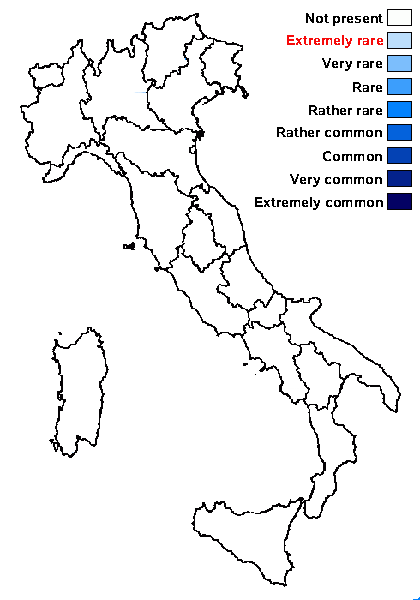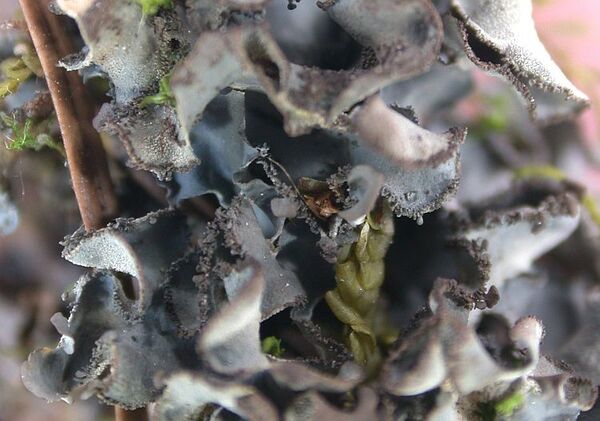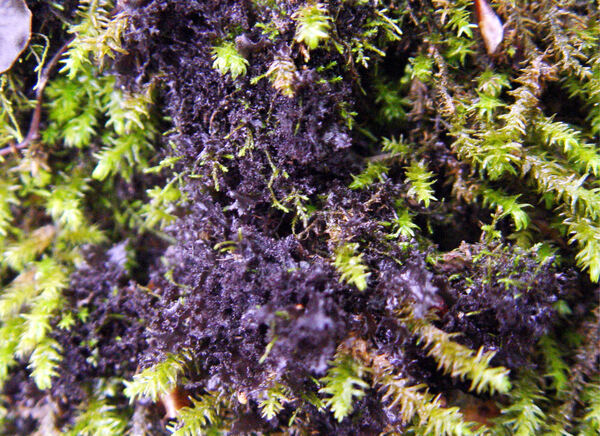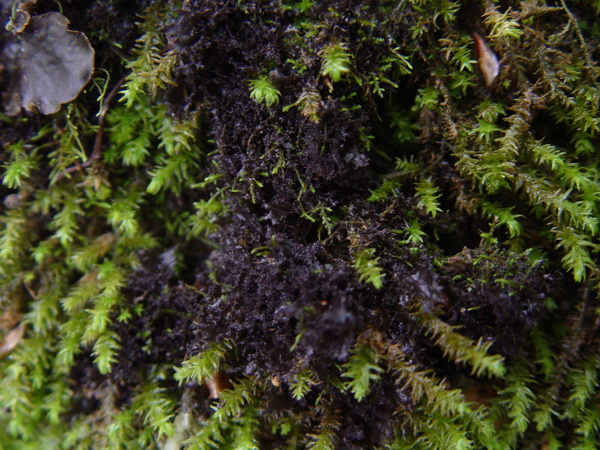Leptogium laceroides B. de Lesd.
Annals Cryptog. Exot., 6, 2: 112, 1933
Synonyms:
Distribution:
Description: Thallus foliose, gelatinous and 80-120 μm thick when wet, bluish-grey, forming (2-)3-6 cm wide patches, the lobes 0.3-0.7 mm wide, smooth, with wavy, usually toothed and sometimes revolute margins, bearing marginal and/or laminal, granular, cylindrical, coralloid or lobuliform isidia which are concolorous with thallus or darker, especially at tips. Lower surface with a dirty white to pale brown tomentum of 7-10(-25) µm long hairs consisting of globose, 3.5-5 µm wide cells. Upper and lower cortex composed of a single layer of angular cells, those of the upper cortex 6-9 x 5-8 μm, those of the lower cortex 8-10 × 6-9 μm; inner part of thallus without medulla, with densely interwoven hyphae and chains of Nostoc. Apothecia very rare, lecanorine, sessile, 3-4 mm across, with a brown disc and an entire or isidiate thalline margin. Proper exciple euparaplectenchymatous; epithecium brown; hymenium colourless, 160-180 µm high, K/I+ blue; paraphyses mostly simple, c. 1.5 µm thick at mid-level, the apical cells slightly swollen; hypothecium pale yellow, 45-60 µm high. Asci 8-spored, cylindrical-clavate, the apex strongly thickened, the apical dome K/I+ pale blue, with a downwardly projecting K/I+ deep blue tubular structure. Ascospores muriform, with 3-7 transverse septa and 1-2 longitudinal septa ellipsoid to subfusiform, 28-35 x 12-17 µm. Photobiont cyanobacterial (Nostoc, the cells in chains of 7-10). Spot tests: all negative. Chemistry: without lichen substances
Note: a western species, known from Portugal and Macaronesia, to be looked for in Tyrrhenian Italy.
Growth form: Foliose, broad lobed
Substrata: bark
Photobiont: cyanobacteria, filamentous (e.g. Nostoc, Scytonema)
Reproductive strategy: mainly asexual, by isidia, or isidia-like structures (e.g. schizidia)
Restricted to humid-warm, oceanic areas

Predictive model
Growth form: Foliose, broad lobed
Substrata: bark
Photobiont: cyanobacteria, filamentous (e.g. Nostoc, Scytonema)
Reproductive strategy: mainly asexual, by isidia, or isidia-like structures (e.g. schizidia)
Restricted to humid-warm, oceanic areas

Predictive model
 Index Fungorum
Index Fungorum
 GBIF
GBIF




